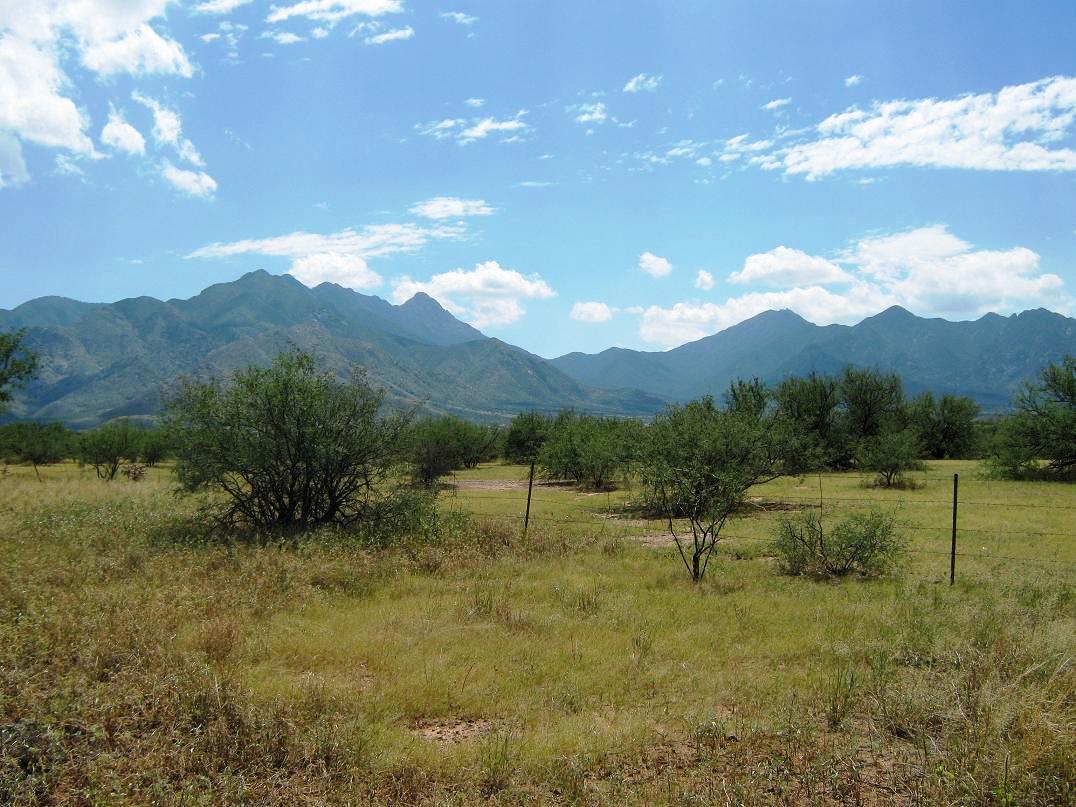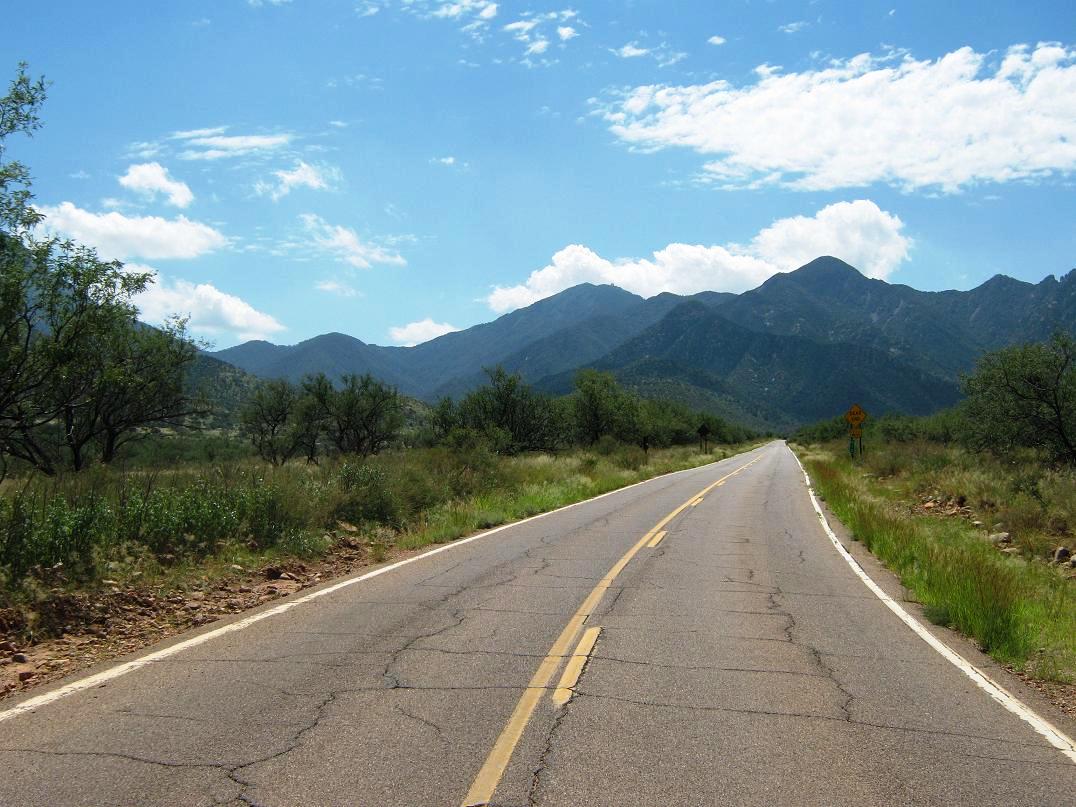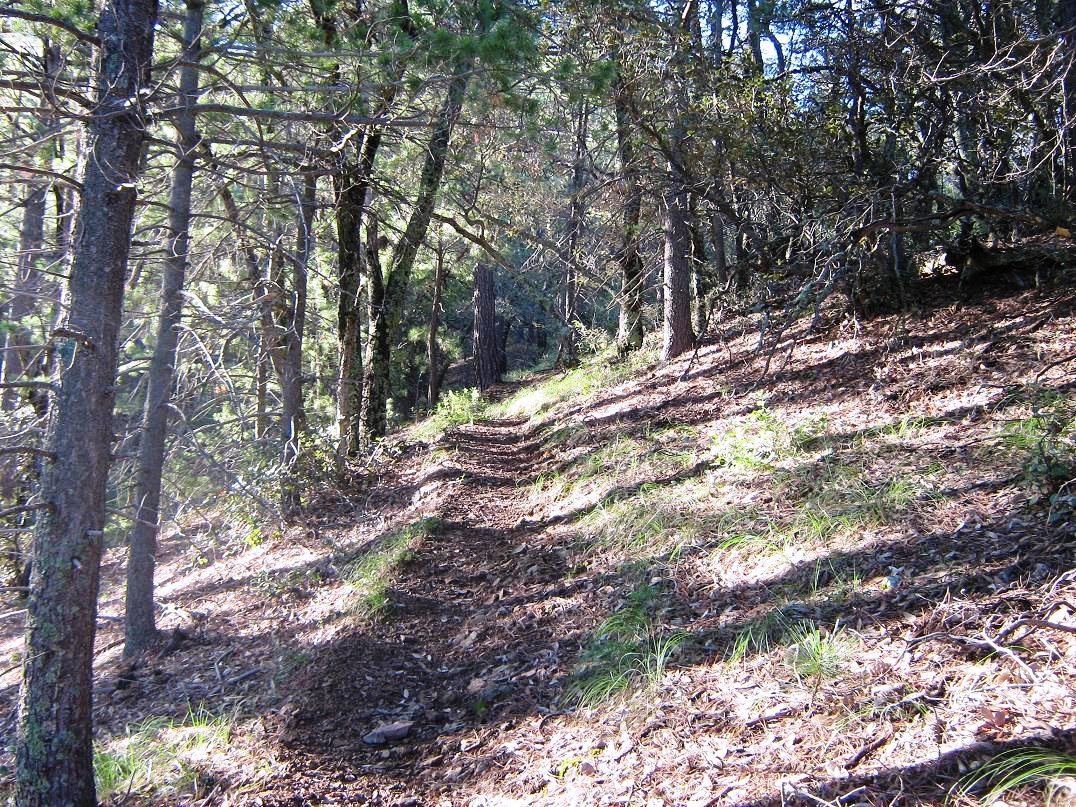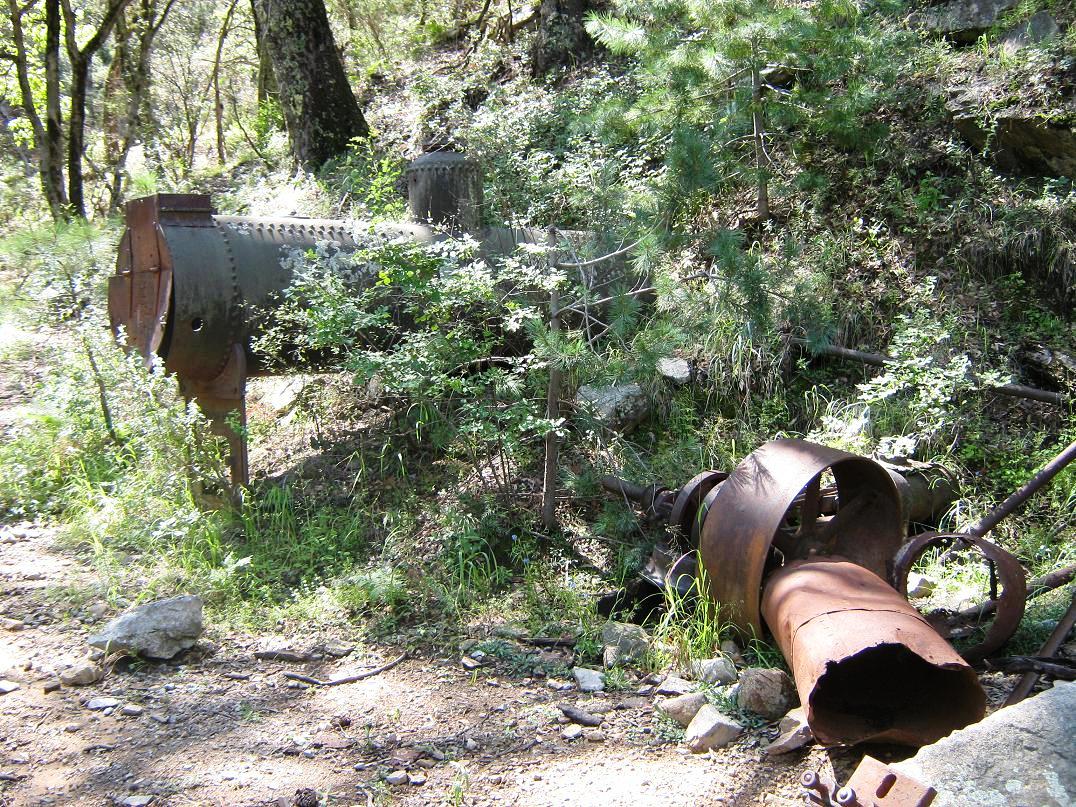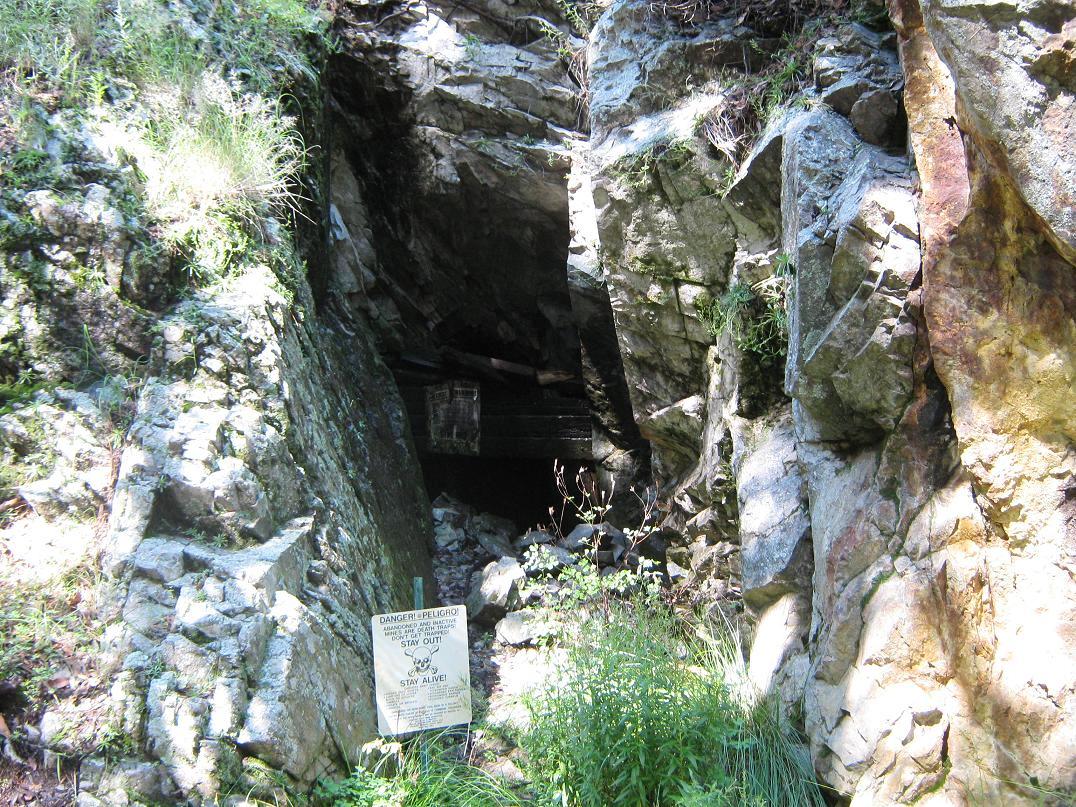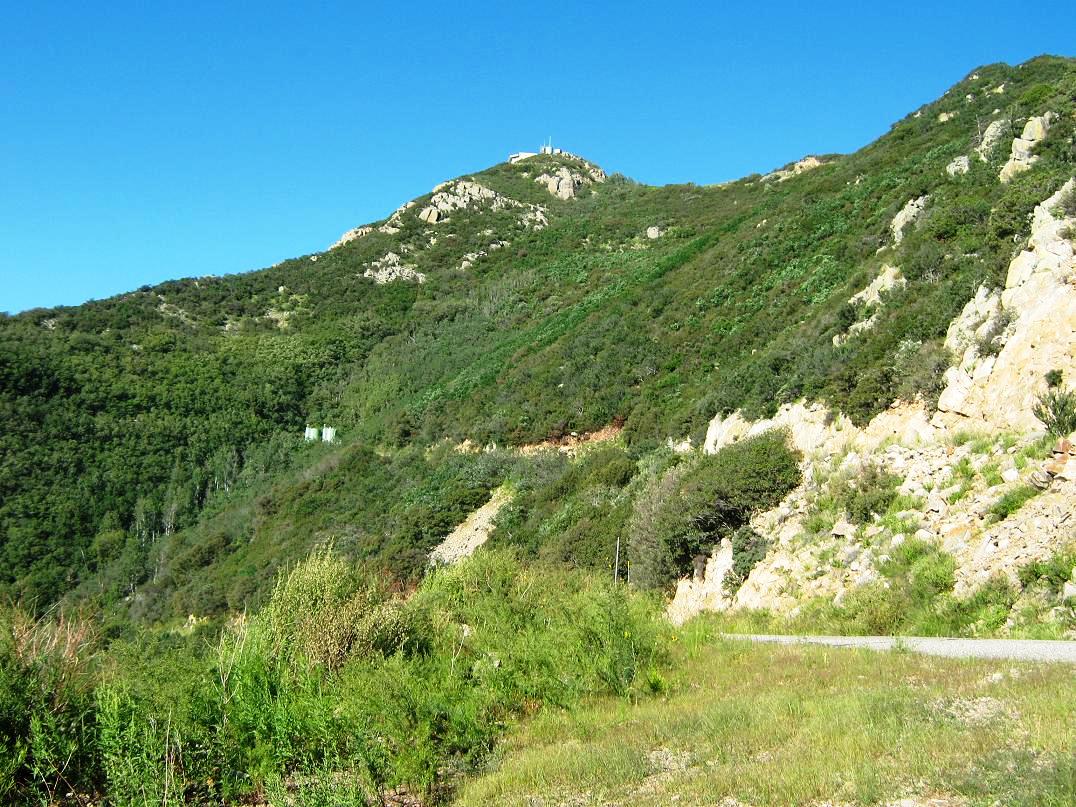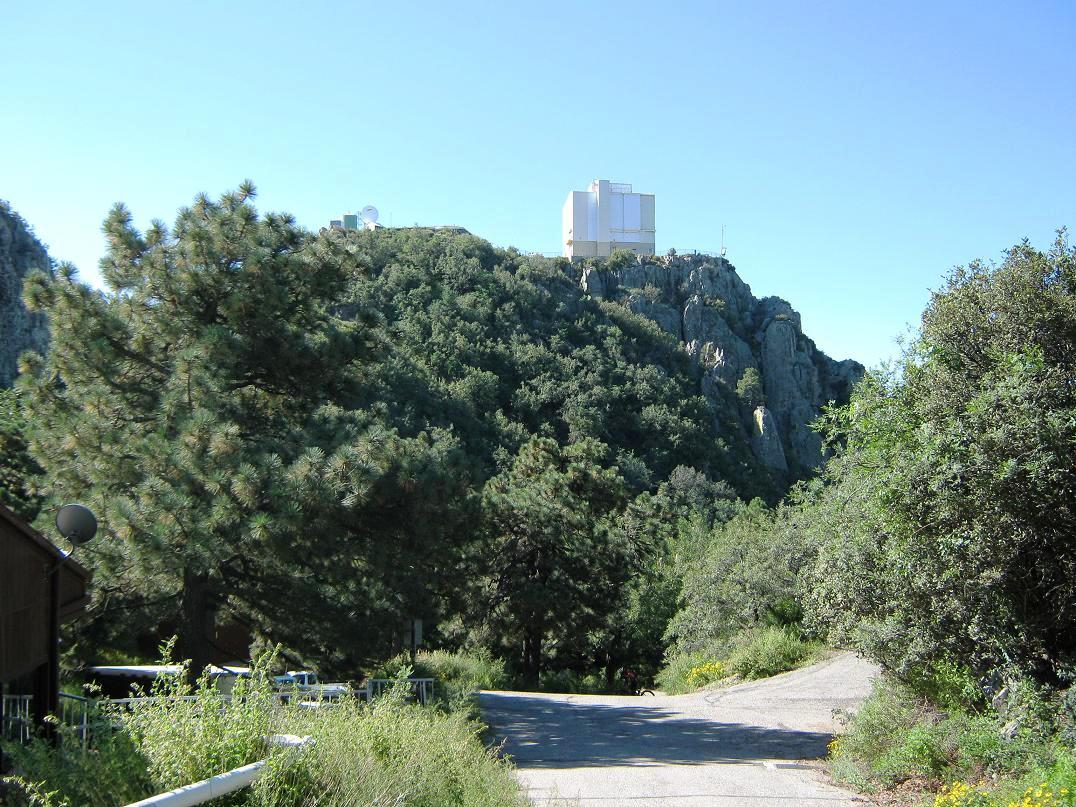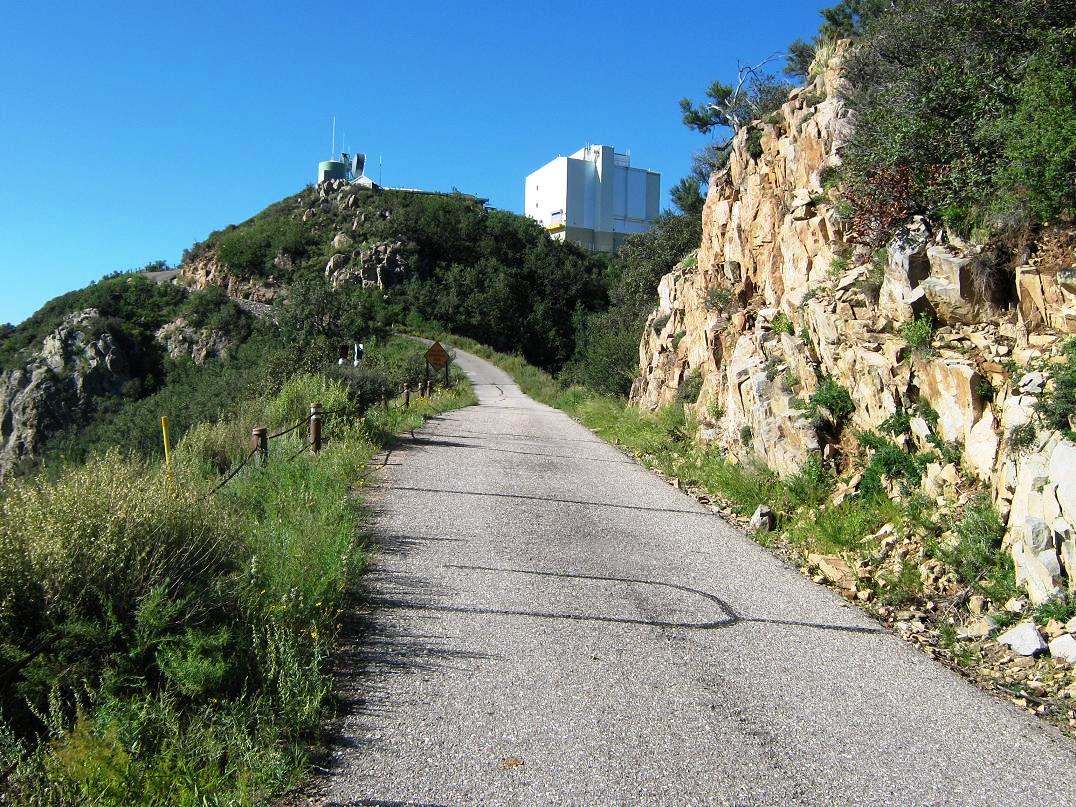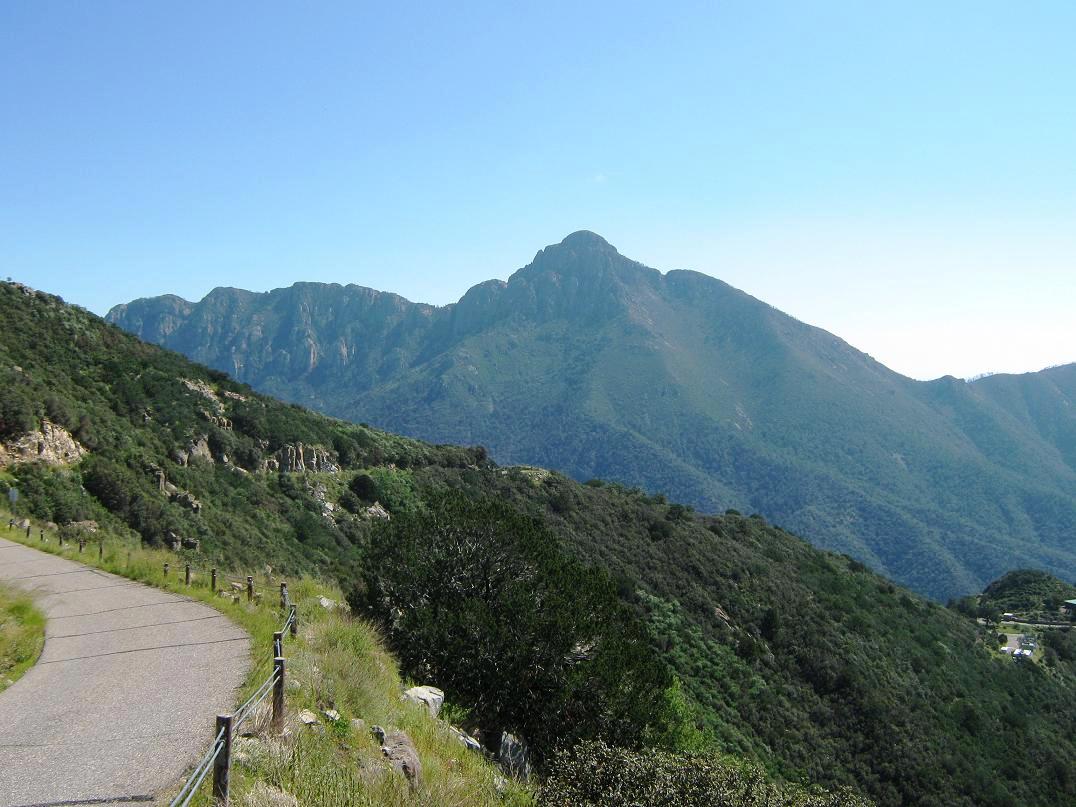
The Mountains of Arizona
• www.surgent.net
|
| Mount Hopkins |
• Santa Rita Mountains • Coronado National Forest • Santa Cruz County |
|
Date: September 10, 2011
• Elevation: 8,560 feet
• Prominence: 1,440 feet
• Distance: 9 miles
• Time: 5 hours and 45 minutes
• Gain: 3,160 feet
• Conditions: Clear but a little hazy with winds
Mount Hopkins is a prominent summit in the Santa Rita Mountains of southern Arizona, about 45 miles southeast of Tucson. It hosts the Whipple Observatory, and is obvious from a distance due to the giant telescope structure that sits on its summit. A narrow paved road goes to the summit, but trails from Madera Canyon also permit access to the top (albeit the final mile via the summit road).
Madera Canyon itself is a popular day-use area, with summer homes, a lodge, a camp-ground, picnic areas, and a multitude of trails that enter into the Santa Ritas. Given its location near Tucson, its paved road access and gorgeous scenery, Madera Canyon can have hundreds of people at once on a busy weekend, even in summer as people escape the heat to these higher elevations.
I was last here in 1998, on my first hike up Mount Wrightson. Back then, in June, it was hot and I was one of about four people who had parked there that day. On my second hike up Mount Wrightson, in 2004 with Beth, we came up from the east side, so this would be my first time back to Madera Canyon in 13 years. It was never clear to me how to get to Mount Hopkins from the Madera Canyon side, as the maps show no trails connecting to the observatory road, but some trip reports indicated some unofficial trails connected from the high ridges to the road.
My drive was eventful: the monsoon was having its last big hurrah for the season, and the day was generally cloudy with spotty storms, although it did have the nice effect of dropping temperatures into the high 90s, the first time in months the day-time temperatures were barely tolerable. I had no trouble (other than traffic) driving into Tucson, but as I eased onto Interstate-19, I encountered heavy rain with spectacular lightning. The lightning was amazing: cloud-to-ground, cloud-to-cloud, bolts, tendrils and whole banks of clouds lighting up at once. The classic lightning you see in the photos, that's what was happening here. But the rain was awful, coming down so heavy I decided to exit the freeway to let it pass. I ended up killing an hour at the Desert Diamond Casino in Sahuarita.
I finally got onto the road into Madera Canyon (White Horse Road from the south end of Sahuarita) at 9 p.m. The rain had stopped but the road was covered in sand and muck from where flash floods had crossed it, and some places, water was still there in big pools. I rolled into Madera Canyon about 9:30, and drove up to the Bog Springs Campground, where I scored a spot. The clouds lifted about 10 p.m., revealing a bright full moon that lit up everything in surreal moonglow. The clouds were still amassed against the bulwark of Mount Wrightson, looking like a giant wave crashing over the top. The winds were heavy all night. Although it didn't rain any more, I didn't sleep too well with all the wind jostling my truck.
I was up by 5:30 the next morning (today) so I drove up to the highest parking area closest to the trailheads. I was the first to roll in, arriving about 5:50 a.m. The ranger rolled up a moment later and warned me that it's a day-use only, "officially" opening at 6 a.m. I explained I wanted an early start to beat the potential afternoon storms and that since it was so close to 6 a.m., asked if he could cut me some slack, and he did. I got my stuff in order and was moving right at 6 a.m. The day was clear, breezy and cool, but not cold. The air was heavy with moisture, and the ingredients were all there for more storms later in the day. But in the meantime, it was relatively calm.
I started up the access road toward the Old Baldy Trail. After 0.3 mile, the Old Baldy trail cut left, aiming for Mount Wrightson. I stayed straight and followed the Vault Mine Trail another half mile to the Carrie Nation Trail, gaining 400 feet total in 0.8 mile from the start. I was still in shade and everything was quiet and peaceful. I could hear the wind rustling the trees, and a nearby stream. Despite the conditions, I felt awful. I couldn't seem to catch my breath, and I felt nauseous. I struggled just to get to here. I stopped to drink, rest and eat some food. That seemed to help. I hadn't hiked at all in over a month, so that certainly wasn't helping my energy.
The Carrie Nation Trail angles left and is the better-looking of the trails, with the Vault Mine ("Very Steep" Trail) going right. There was no sign here for the Carrie Nation Trail, though. The official maps show this trail (marked as #78) going up about 1.5 miles, then ending near an old mine. Other reports indicated that this trail actually meets the main ridge at the Agua Caliente Trail. It would put me close to the low saddle directly below Mount Hopkins, if everything worked out right.
I followed the Carrie Nation Trail as it entered into a stream for a few hundred yards. It would hug right along the bank, then “become one” with the stream itself for a while before exiting onto the bank again. The stream was flowing heavy, no doubt due to all the rain that had fallen. I kept at this segment for about 0.3 mile to a point where the trail switchbacked right up a slope and away from the stream, then made another switchback left, all this shown accurately on the map.
I was getting my energy back and making good time. Here, the trail went up through a moderately-thick forest of pine. The trail itself was in good shape but rocky, with a few fallen trees spanning it. After a few minutes, the trail came back toward the stream, and shortly thereafter came to some old mining apparati just laying there, probably over 100 years old. The mine itself was a few yards beyond this point. I crossed the stream here and spotted the trail angling steeply up the opposite hillside. This is where the map shows the trail to end (obviously, it does not).
The “trail that doesn't exist” is actually a fantastic foot-path cut through the forest, low grass and matte of pine needles, gaining steeply, but never too steep, up the hillside. It gains onto a sub-ridge south of Point 7,139, snakes through the trees and then comes to an interesting shelter of logs piled up into a three-walled lean-to, with a fire ring. This would make a fabulous campsite. I continued upward, huffing and puffing, going at my usual slow but effective pace. Not long after the shelter I came to a Y-junction in the trail, with the left branch going steeply down. Obviously, I didn't want that, so I went right.
Not more than 50 feet later I came to another junction, and made a hard right here. This was the only place on the whole hike where I had to be attentive to the junctions. Once past this, I followed the trail some more, finally emerging onto the Agua Caliente Trail at 7,200 feet, directly north of Jacks Mountain as shown on the map. I took another break here. I had gained about 1,800 feet in about 90 minutes, and so far, not seen another soul. The weather was still clear, but the wind was strong up here. It blew my hat off a couple times.
I went right (west) on the Agua Caliente Trail for a few hundred yards. I was close to the 7,300-foot saddle below Mount Hopkins, and I spied a good trail veering off the main trail and up to the saddle itself. Was this the access up to the observatory road? It looked as good as anything so I followed it, and it worked. It runs west along the spine of the ridge, aiming all the time for a set of antennae dishes visible up on the slopes above me. The trail was cut into the woody brush and mostly visible, but a few times it would become overgrown or veer off in an illogical direction. In the few cases I got off track, I was able to amend my error after a few moments.
On the ridge, with nothing to slow it down, the wind was quite intense. But so were the views: Mount Wrightson stood like a gigantic cathedral looking east (and into the sun for the time being). I could look down into Madera Canyon to the north, and Josephine Canyon looking south. I time, I had gained the 500 feet to meet up with the transmission antennae. These were atop a small building, itself at the end of a dirt-road spur off the main paved summit road. I was about 7,800 feet, and the big observatory buildings were visible above me. Their size played tricks: it all looked closer than it should have. The road was pitched leniently so it meandered more, making for slightly over another mile to go to the top.
So I started trudging up the road. I took it slow and enjoyed the great views into the Santa Cruz River Valley to the west. A work-truck passed me, and a little later, a woman came walking down so we chatted. She was an astronomer stationed up there, out for a morning stroll. The road was easy walking, and the wildflowers were out in great abundance. Soon, I came to the first set of buildings: some dormitories for the workers, a common building for the workers and the tourists, and a small picnic area with tourist parking. My concern about access dissipated as it was obvious they encourage visitors. The final walk past the dormitories to the summit was steep, and I arrived on top about 9 a.m., a three-hour hike gaining 3,100 feet.
I stowed my pack and toured the main observatory building, walking its perimeter and looking out over the fencing and informative signs. The workers were up here fixing a transmission dish, but they didn't seem to mind my presence. The views were wonderful, but occluded by the haze in the air. I could barely make out Baboquivari to the west. The big Santa Catalina and Rincon Mountains up north were also barely discernible. However, conditions here were stable, clear, pleasant with the omnipresent wind.
As for the actual highpoint: I thought it might first be a rock along the perimeter fence near the observatory, but I checked out the nearby garage/power plant facility where the workers were, and sure enough found a natural pile of rocks nearly roof-high around back. I tagged these and felt good about tagging the highpoint. I decided I should start moving down, so I walked back to the picnic area and spent a dollar for a cold can of coke at the vending machine. The fact I could do this after a long hike was very amusing to me. Why pass up the chance? I had a nice half-hour lunch break here in the picnic area, in the shade, with an ice-cold can of pop. Life could be worse.
Some bicyclists had rolled up, looking utterly beat after their upward journey. Meanwhile, I started walking back down when I came upon the astronomer lady again. We had a longer chat. She searches for earth-like exoplanets, and was stationed here just for a four-day stretch. She said that last night's lightning show was something else. We talked for 10 minutes, a good way to rest some more. Once we parted ways, I made good time back to where I picked up the trail back into the trees.
The hike down went quickly. I retraced my route and quick-walked the down-hill sections of the upper part of the Carrie Nation Trail, where there were few rocks and a good mat of leaves and needles to aid movement. I came upon some hikers, the first I'd seen all day, and a few more as I descended. By now, the sun was high and the temperatures warming but the conditions were still pleasant, I took a few breaks to relax and take in the sights, sounds and scents of the forest. It had turned out to be a fantastic day overall, and I was in no hurry to get back down. However, I didn't waste time either, and I kept at a consistent downhill pace all the way back to my truck, arriving at 11:45 a.m. By now, the lots were jammed with day hikers and picnickers. I changed into drier clothes and got rolling about noon sharp.
The drive out was nice, and I stopped a few times to take photographs. Once back to the freeways, I headed home to Scottsdale, stopping for a meal at my usual spot, the Cracker Barrel in Casa Grande. I was back home by 3 p.m., where I could clean up, relax my sore bones and spend time with my wife and the kitties. The hike was just what I needed after a stressful week, and getting out of the heat was great, too. That night, more storms built, and the Phoenix area got drilled by some impressive thunderstorms, rain and lightning.
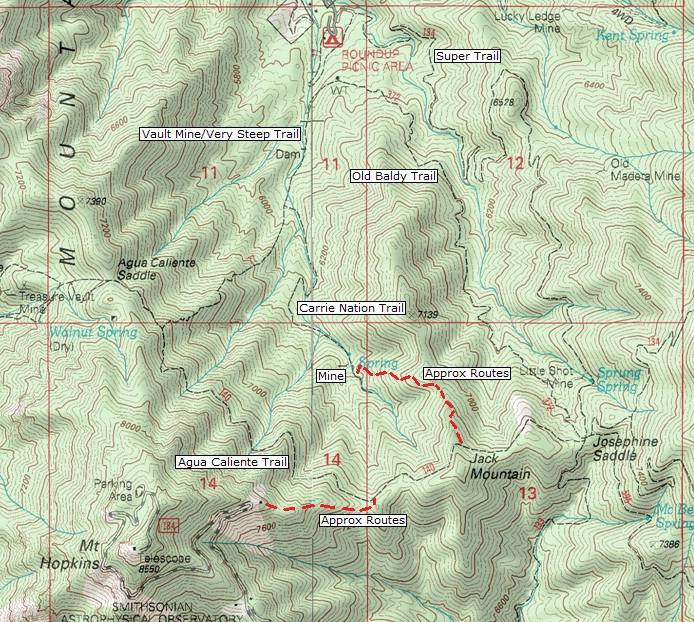 Route map
|
|
